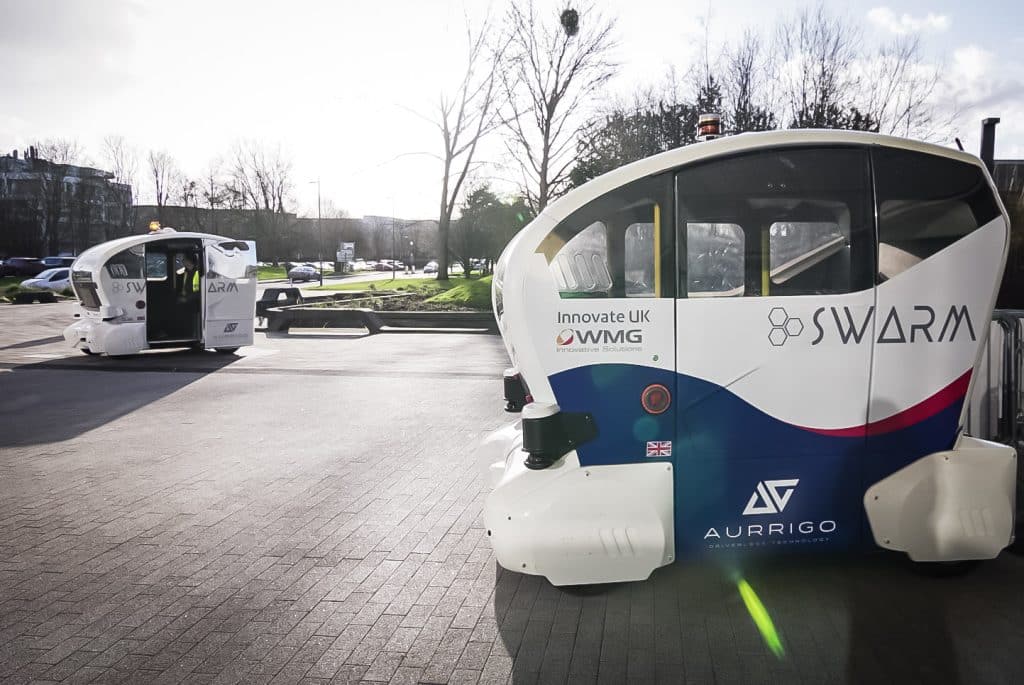WMG at University of Warwick, partners develop autonomous pods capable of swarming
January 31, 2020 | AUVSI News

WMG at the University of Warwick in Coventry, England, Aurrigo and Milton Keynes council have conducted research that has made the concept of swarming autonomous pods a reality.
Researchers envision a scenario where passengers would be able to use an app to hail a pod, and if they are traveling in a group, they could hail a platoon of pods.
Designed for pedestrian areas and shared spaces to enable first and last mile service, the pods have been equipped with swarming skills typically used by birds and insects.
According to the researchers, successful swarming means that the pods can now schedule themselves to form a ‘platoon,’ which allows them to follow each other when possible, and minimizes the number of individual vehicle movements and the need for a supervisor per pod. In the future, the expectation is that a supervisor will be able to watch several pods and report any unexpected behavior.
“The SWARM algorithm has been tested and is proven to be effective and reliable,” says Dr Roger Woodman, Associate Professor in human factors at WMG at the University of Warwick.
“The ability to make pods ‘swarm’ together like a group of bees or birds, means they can coordinate with each other, bringing them one step closer to our streets.”
While working within a fleet, the pods are also able to distribute themselves within a city to the areas where they will most likely be requested, so that they can meet future passenger demand.
“The collaborative SWARM algorithms have been developed to enable our autonomous vehicles to optimize their own trip schedules, so they deliver the optimum efficiency from a fleet of vehicles,” explains Simon Brewerton, chief technology officer at Aurrigo.
“The swarming technology is very exciting and has the potential to operate large fleets of remotely supervised autonomous vehicles in a safe and scalable way. Interest in this will be huge.”
- Industry News


